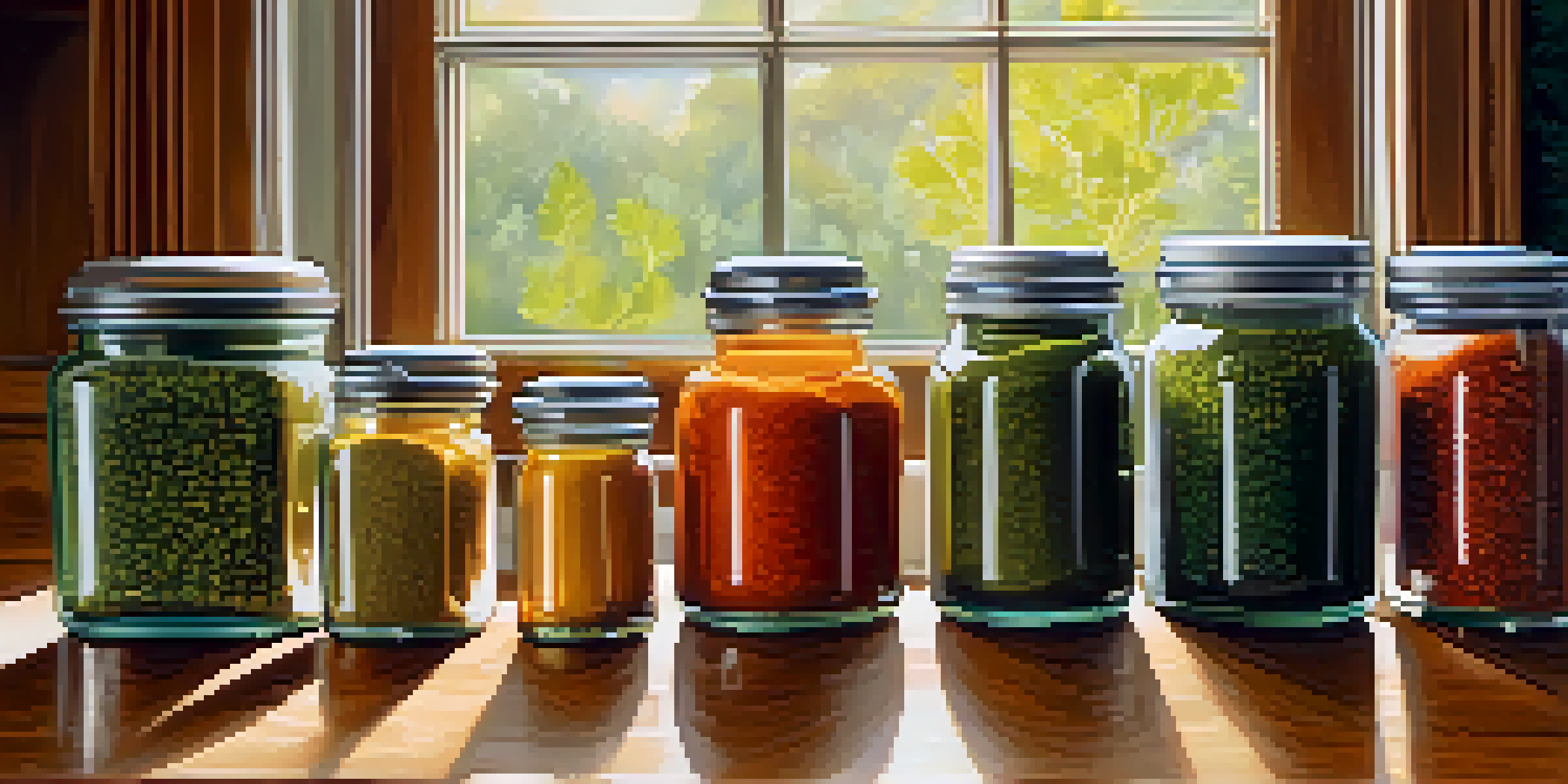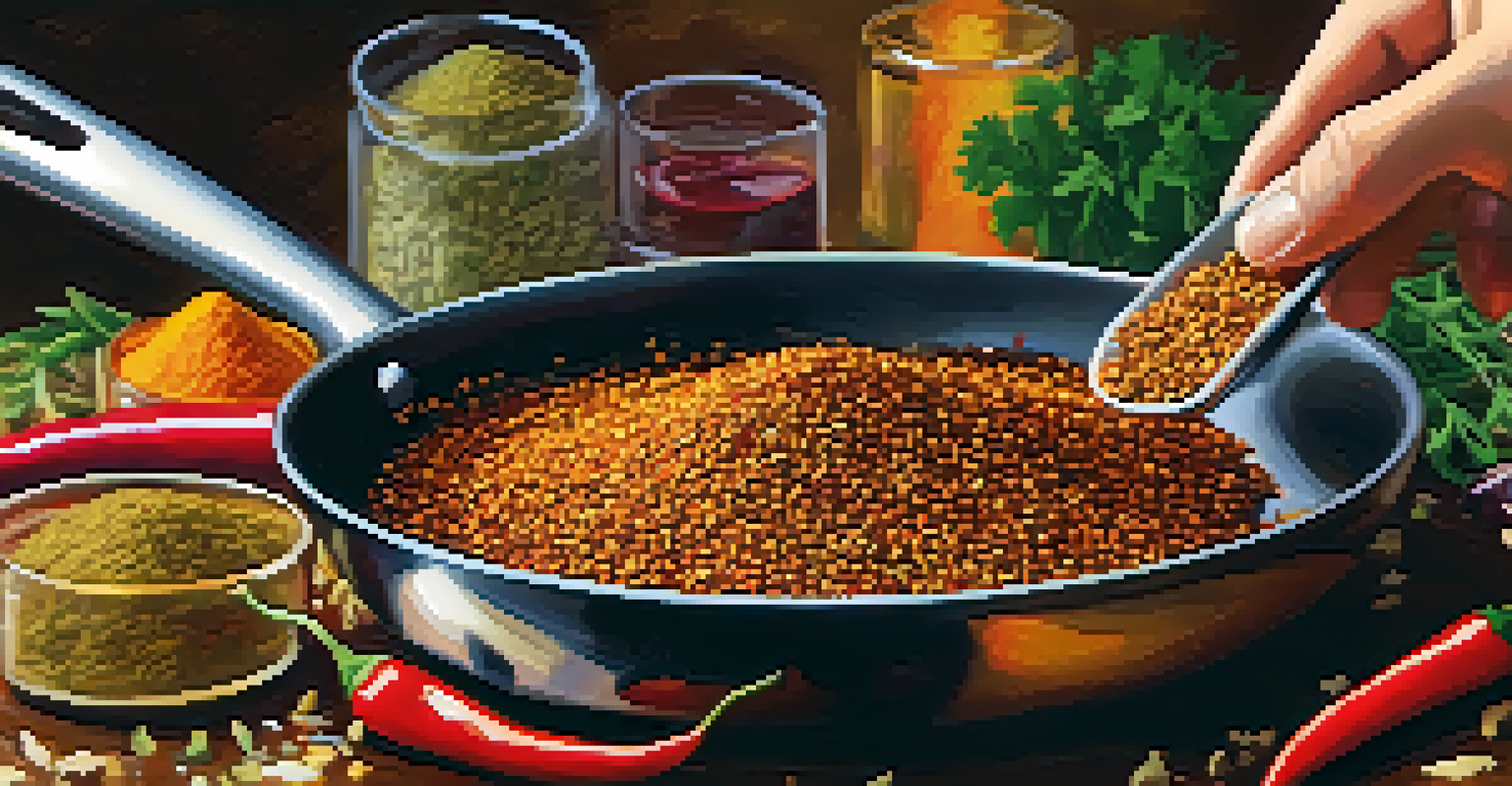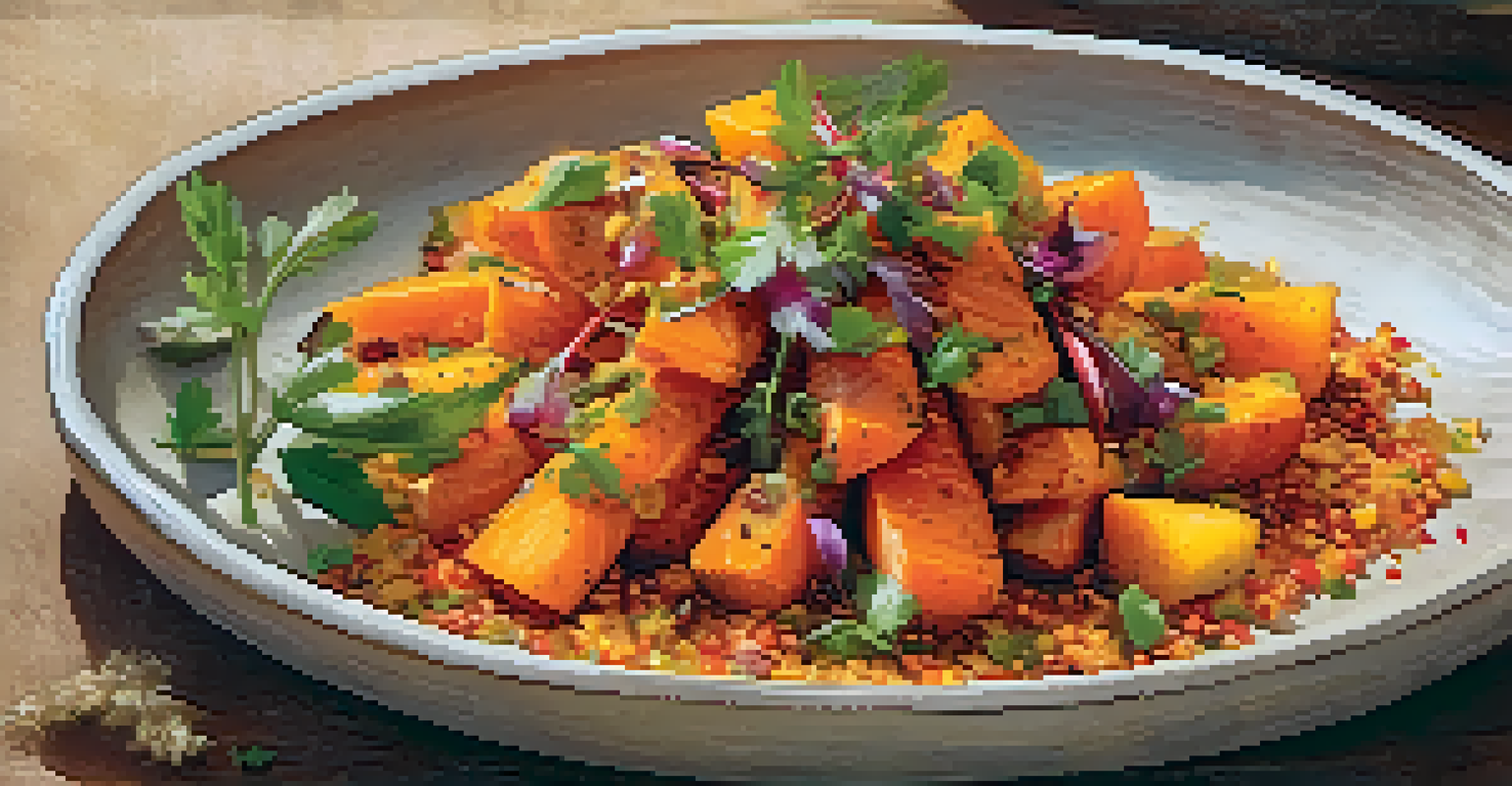Vegan Cooking with Spices: Techniques for Bold Flavors

Understanding the Role of Spices in Vegan Cooking
Spices are the heart of flavorful cooking, especially in vegan dishes. They add depth and complexity, transforming simple ingredients into culinary masterpieces. With the right combination of spices, you can elevate vegetables, grains, and legumes, making your meals exciting and satisfying.
Spices are the magic of cooking; they can turn an ordinary dish into something extraordinary.
For instance, consider how cumin can add warmth to a chickpea stew, or how smoked paprika can give roasted vegetables a delightful smoky flavor. This is the magic of spices; they can turn an ordinary dish into something extraordinary.
Understanding the role of spices is essential for any vegan cook. This knowledge allows you to experiment confidently in the kitchen and create dishes that are not only healthy but also bursting with flavor.
Essential Spices for Your Vegan Pantry
Every vegan kitchen should be stocked with a variety of spices to create bold flavors. Some must-haves include cumin, coriander, turmeric, smoked paprika, and chili powder. These spices can cover a wide range of flavor profiles, from earthy to spicy.

For example, turmeric not only adds a vibrant yellow color to dishes but also provides anti-inflammatory benefits. Meanwhile, smoked paprika can give your meals a rich, smoky taste that mimics the flavors often found in meat dishes.
Spices Transform Vegan Dishes
Using the right spices can elevate simple vegan ingredients into flavorful, satisfying meals.
Having a well-stocked spice pantry allows you to explore different cuisines and create authentic dishes. This versatility is key to keeping your meals interesting and diverse.
Techniques for Toasting Spices to Enhance Flavor
Toasting spices is a simple technique that can significantly enhance their flavor. By briefly cooking them in a dry pan over medium heat, you awaken the essential oils and amplify their aroma. Just a minute or two can make a world of difference.
Cooking is like love. It should be entered into with abandon or not at all.
For instance, try toasting cumin seeds before adding them to your curry. You’ll notice a richer, more complex flavor that will elevate your dish. It’s a small step that leads to a big impact.
This technique is easy to incorporate into your cooking routine. As you toast spices, you'll become more attuned to their scents and flavors, which will help you create more balanced and flavorful dishes.
Creating Flavor Profiles: Sweet, Savory, and Spicy
Understanding flavor profiles is essential for crafting delicious vegan meals. Sweet, savory, and spicy elements can work together to create a harmonious dish. For instance, pairing sweet roasted carrots with a sprinkle of chili flakes can create an exciting contrast.
A classic example is a sweet and spicy salsa made with mango, lime, and jalapeño. The sweetness of the mango balances the heat of the jalapeño, resulting in a refreshing topping for tacos or grilled veggies.
Herbs Brighten Up Flavors
Fresh herbs complement spices by adding brightness and freshness, enhancing the overall flavor of vegan dishes.
Experimenting with different flavor profiles not only enhances your cooking but also keeps meals interesting. The key is to find the right balance that works for your palate and the ingredients you have on hand.
Using Fresh Herbs to Complement Spices
Fresh herbs are the perfect complement to spices in vegan cooking. While spices provide depth, herbs add brightness and freshness to your dishes. Common herbs like cilantro, basil, and parsley can bring a whole new dimension to your meals.
For example, adding fresh cilantro to a spicy black bean soup can lighten the dish and provide a refreshing contrast. Similarly, basil can elevate a simple tomato sauce, making it feel vibrant and alive.
Incorporating herbs into your cooking is an easy way to enhance flavor without overwhelming your dish. They can be used as garnishes, or stirred in just before serving for a fresh burst of flavor.
Balancing Flavors: Salt, Acid, and Heat
Balancing flavors is crucial in any culinary creation, and vegan cooking is no exception. The combination of salt, acid, and heat can elevate your dishes to new heights. A pinch of salt can enhance sweetness, while a splash of vinegar can brighten up rich flavors.
For instance, if you've created a thick and creamy cashew cheese sauce, a squeeze of lemon juice can cut through the richness and add a refreshing zing. Similarly, adding a hint of heat from cayenne pepper can make your dish more exciting without overwhelming it.
Balance with Salt, Acid, Heat
Achieving a balance of salt, acid, and heat is essential for creating well-seasoned and flavorful vegan meals.
Learning to balance these elements will make you a more intuitive cook. It allows you to adjust recipes on the fly, ensuring that every dish you create is perfectly seasoned and full of flavor.
Experimenting with Global Spice Blends
One of the most enjoyable aspects of vegan cooking is the opportunity to explore global spice blends. From Indian garam masala to Moroccan ras el hanout, these blends can introduce you to new flavors and cooking techniques. Each blend tells a story, reflecting the culture and ingredients of its origin.
For example, a sprinkle of za’atar can transform roasted vegetables, adding a herby, tangy flavor that’s simply irresistible. Alternatively, using curry powder can take your stir-fries to a whole new level with its aromatic profile.

Don't be afraid to experiment with different blends in your cooking. Mixing and matching spices can lead to delightful surprises and encourage your culinary creativity.